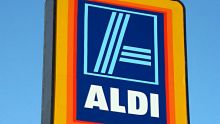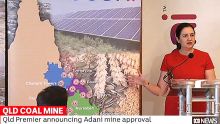Continued selling in the big banks spread to all other major sectors, sending the sharemarket to its lowest in nearly four months.
In broad-based losses that saw just 19 stocks of the top 200 rising, the benchmark S&P;/ASX200 index tumbled 1.5 per cent to 5667.5 points, just about wiping out the remainder of this year's gains.
More BusinessDay Videos
ASX winners and losers - a snapshot
The stand out listings traded on the ASX captured at key moments through the day, as indicated by the time stamp in the video.
While the release of the current account deficit and government spending on Tuesday surprised on the downside, Fairmont Equities managing director Michael Gable said the sell-off started before their release, and was probably more linked to a broader downturn in sentiment that started last month.
"It's just a continuation of the down-trend," he said. "The index, and especially the banks, had such a fantastic run in the last 6 months. Everything just got ahead of itself and we're continuing to see money come out of the top end of the market.
"Half the index is the ASX20, so when those stocks soften, the overall index comes back."
Profit-taking in utilities and property stocks didn't help things, added Bill Keenan, general manager of direct equities research at broker Lonsec. "The utilities sector especially have had a very good run in the past few sessions," he noted.
The big banks were the largest drag on the index, with ANZ Bank dropping 1.6 per cent, Commonwealth Bank down 1.5 per cent, NAB losing 1.7 per cent and Westpac falling 1.4 per cent, cementing several days of losses.
The big miners also dragged the index lower. Rio Tinto was down 0.9 per cent, while BHP Billiton shed 1.7 per cent after an activist investor called for its board ot be overhauled.

Cochlear and CSL retreated from recent highs, down 2.4 per cent and 1.6 per cent, respectively.
Whitehaven Coal managed to trade in the black, up 3.2 per cent, while Qantas also made some small gains, up 0.2 per cent.

Providing major support to the index was gold miner Newcrest Mining, up 0.9 per cent. It was joined by strong performances in other gold producers like St Barbara, Evolution Mining and Northern Star Resources, all benefiting from a further surge in the price of spot gold, which traded at $1287.24 at the end of hte Australian session.
"The only thing that looks interesting at the moment is gold stocks," said Mr Gable. "Gold looks like it's poised to break through a long-term resistance level, and if that happens, we'll see a further jump in the ASX's gold stocks."
Stock watch: APA Group
APA Group fell 4.5 per cent, its biggest drop in 2017, to $9.35 after Goldman Sachs downgraded it to a 'hold', taking it off its conviction list after very strong share price growth. The gas transporter, along with many other bond proxies, surged strongly after hitting a low point as bond yields briefly rose after the election of US President Donald Trump. With bond yields falling since then, it and other similar stocks have soared, with APA Group trading near an all-time high on Monday. However, analysts are increasingly viewing the sector as overpriced. Most of the 13 analysts who cover APA Group, according to Bloomberg, have it as a 'hold' or 'sell', with only 3 keeping it as a 'buy'. It has a consensus 12-month price target of $9.16.
Market movers
Interest rates
The Reserve Bank kept interest rates on hold at 1.5 per cent for the ninth straight month, as was universally expected. Aberdeen Asset Management head of Australian macro David Choi said the RBA's statement showed financial stability was front of mind for the central bank, making further rate cuts unlikely. "We expect the introduction of further macroprudential policies to prevent banks from lending fast and loose to households.The last thing the RBA wants is another surge in house price growth, fuelled by unsustainable growth in household leverage."
GDP partials disappoint
The current account balance deficit for the first quarter narrowed only slightly to $3.1 billion, from $3.9 billion. Economists had expected a sharper drop to $500 million. Net exports will now subtract 0.7 percentage points off first-quarter GDP, due on Wednesday, meaning already lowered forecasts of 0.3 per cent growth in Q1 are looking more uncertain. The Aussie dollar nosedived on the data, falling a third of a cent to the day's low of US74.61¢. Meanwhile, investment spending by the government dipped 2.7 per cent to $21.14 billion - another drag on the GDP figures.
RFG v UBS
Retail Food Group share price recovered 3.2 per cent after yesterday's dramatic 11 per cent fall, which was prompted by UBS' Jordan Rogers downgrading the stock as it warned the highly shorted company could be adversely affected by international accounting standards. On Tuesday, RFG hit back in a statement to the ASX, saying UBS' analysis was "premature, precipitous and... an exercise in speculative guesswork." "RFG has little insight into the basis upon which the UBS reports were prepared," it said, adding that UBS hadn't contacted it about the analysis.
Oil tumbles
Oil prices fell for the third day, hit by concerns that a political rift between Qatar and several Arab states would undermine an OPEC-led push to tighten the market. Persistent gains in US production also dragged on benchmark crude prices, traders said. Brent crude traded at $US49.27 per barrel, down 0.4 per cent from its last close. That's 9 per cent below the level of oil futures on May 25, when OPEC's oil output cuts were extended. Leading Arab powers cut ties with Qatar on Monday, accusing it of support for Islamist militants.














